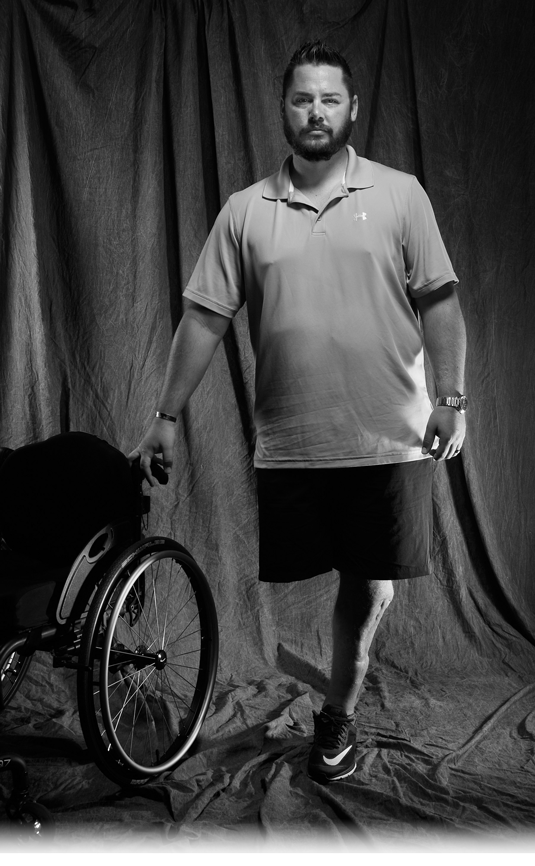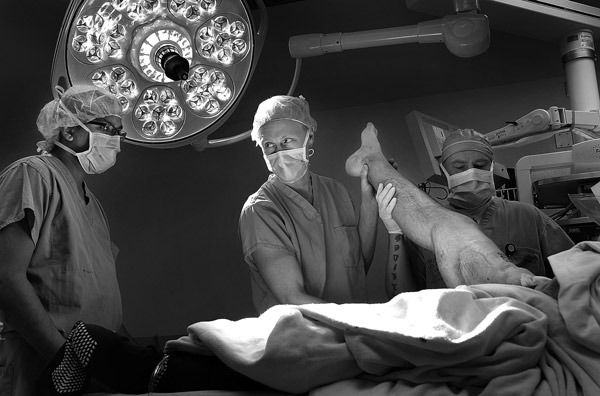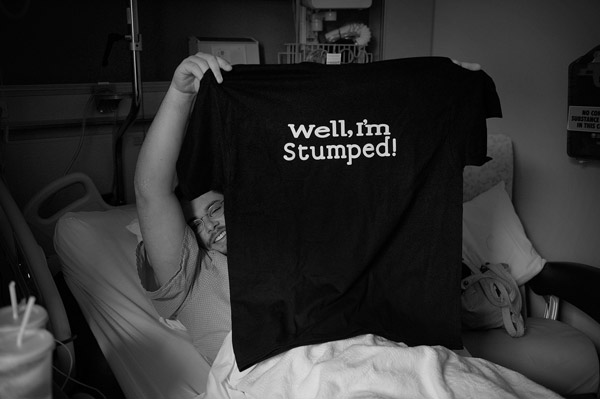Within minutes, Jacobs is all but hidden beneath a wrap of plastic, towels and sheets.
A light blue curtain separates his body at the chest. On one side, only his face is left exposed — his eyes are taped shut and an inch-wide tube is protruding from his mouth. On the other side, his right leg flops back and forth as a nurse wraps his thigh in plastic, just above the knee.
Tall and trim, orthopedic surgeon Erik Kubiak drifts into the operating room, picks up an antibacterial applicator and waves it around like a conductor's baton. With it, he paints the exposed skin with the bright orange solution, humming as he goes.
From the top of his calf down, Jacobs' leg is wrapped in blue plastic, bound over with bandages. A tourniquet is wrapped around his thigh and engaged.
"OK," Kubiak says. "Let's get started."
Working from Jacobs' left side, Kubiak traces an imaginary line above the patient's knee, then dips his scalpel into the exposed flesh. Working from the right side, surgeon Linsey Etherington does the same. The two scalpels move in opposite directions, drawing a deep red circle around Jacobs' leg. A blue towel below the surgeons' hands turns crimson.
Within seconds, they are an inch deep all the way around. Globs of creamy yellow fat billow from the incision.
Seconds more, and Jacobs' patella is exposed — bright white against the yellow and red. The surgeons work through the ligament and tendon below his knee, which snap back as they are snipped through.
It took hours to prep him for surgery. Now, without comment or ceremony, Jacobs' lower leg is detached from his body.
Holding it by the calf and the toe — straight up, to keep fluids inside — a nurse carries it away and places it into a blue plastic bag.
Freed from having to work around the lower leg, Kubiak and Etherington have a better angle from which to attack the knee and femur.
They begin with incisions up the thigh, on each side of the knee, then dig in with their fingers, detaching loops of fat. Embedded in the muscle, black flecks of metal glint under the brilliant surgical lights. Kubiak wrests out a few of the larger pieces. For the first time since being embedded in his body nearly 10 years ago, the shrapnel is set free.
With a metal rake, like a long fork with bent tines, Etherington pulls back the skin and muscle of Jacobs' thigh. Kubiak nips at the tissue surrounding the end of the femur, which is as thick as a man's wrist.
Kubiak grips a bone saw. It's strikingly small, shaped like a hand drill but with an oscillating blade. When it is turned on, it emits a high-pitched buzz. Against the bone, the buzz transforms into a low-pitched grind. A faint burning smell, like charred sapling wood, fills the operating room.
Kubiak disengages the saw and takes hold of a chisel. Four taps. A loud crack. Ten taps.
It's off.




